As trust in social institutions spirals down and people feel more isolated, is the social contract battered beyond repair? Trust in governments, media, church, science are plummeting — replaced by trust in complete strangers’ 5-star reviews.
As disruptive forces push us to recalibrate trust, neuroeconomist Paul Zak draws on deep research on the moral and economic value of trust… to help us learn how to weather the storms of this trust revolution. Perhaps because of these radical changes, trust is invaluable today. As Zak says, “trust is a key aspect of culture, we know it affects engagement and performance.” In terms of business, organizations with high trust are 27 times as likely to have high performance, so leaders have an urgent need for a way through the rising sea of mistrust.

by Joshua Freedman
Trust is the glue that holds people and organizations together; as technology changes society, the old models of trust are falling away. Meanwhile, the brain circuitry that manages trust needs to rewire. Paul Zak and I discuss the social and economic implications of this “trust revolution” — and the implications for leaders. We conclude with four strategies from Zak’s research and his latest book Trust Factor: The Science of Creating High-Performance Companies.
Fueled by Technology: The Trust Revolution
Past generations imbued institutions as vessels of trust. Banks, churches, schools, courts, police, government, media, even democracy were seen as permanent fixtures for social stability. These buildings wrapped with sweeping marble columns showed strength above the mortal fray. Within a generation, these pillars are crumbling:
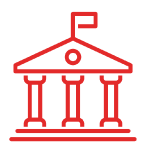
In the US, trust in government hovers at historic lows. A recent Pew survey on trust: just 20% say they trust the government to do what’s right always or most of the time.

Trust in media dropped another 8% last year to a historic low. Look at the graph below from Gallup’s longitudinal study.
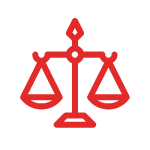
Even a “august” an institution as the US Supreme Court has lost trust. Gallup’s poll on trust in government found only 16% of people have “quite a lot” of confidence in US Supreme Court and only 12% in the US congress.
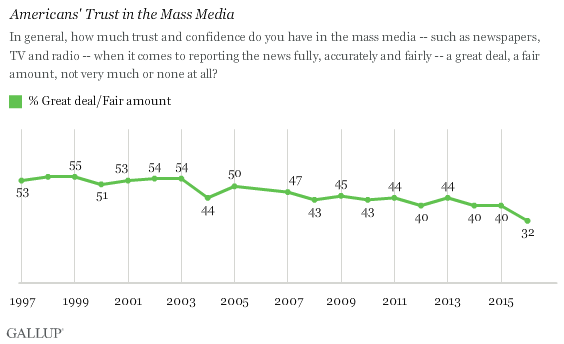
Amidst growing uncertainty, we’re crowd-sourcing trust instead of building it in our personal relationships. Zak: “We’re beginning to replace with information the ability to trust strangers, as opposed to traditional overarching institutions.”
We’ve developed whole industries online as work-arounds to construct trusting relationships. We’ve created a new definition of trust that is far beyond the biological basis. Companies like Uber, Yelp, Tripadvisor, AirBnB are retooling our understanding of trust. We’ve had to breakdown our conditioned response to never ride in a stranger’s car, to let strangers into our homes or take someone’s word for it that the fish curry at the little place on the corner is delicious.
The biology of trust is fundamentally a person-to-person process… so as technology demands new definitions of trust, we’re utilizing evolutionarily old brain systems in new ways.

To Trust is Human: The Relational Basis of Trust and Distrust
In some ways information technology has made us more connected, as has the “sharing economy.” Yet research on social media and loneliness suggests social media is not increasing our feeling of connectedness. Sadly, people are feeling increasingly isolated, The spiral of declining trust may actually be fuelled by the very personal loss of connection and growing isolation.
In the “great wars” of the last century, propaganda departments churned out posters dehumanizing the enemy, characterizing them as bugs to squash or beasts to tame. Today, we do this to one another daily. If you can stomach it, read the comments on any controversial social media post, and you’ll see a rapid descent to name calling. We don’t see one another as fellow humans, and this undermines trust.
Paul Zak explains that trust is fundamentally a relational emotion. It grows from people being and working together. It’s deeply embedded in our neural architecture: “The neurobiology we’ve done on trust shows that the areas in the brain that have receptors for oxytocin are evolutionarily old. They’re deep in the brainstem; they’re part of our evolutionary history.” While Zak says these brain functions are activated even through an online call, there’s a risk. Distrust reinforces feelings of isolation, leading to more distrust.
Zak’s pioneering work links trust to a specific neurohormone. A chemical called oxytocin. As he explained to The Guardian, “oxytocin is primarily a molecule of social connection. It affects every aspect of social and economic life, from who we choose to make investment decisions on our behalf to how much money we donate to charity. Oxytocin tells us when to trust and when to remain wary, when to give and when to hold back.”
This “when to give and when to hold back” has profound implications in our personal relationships, in business — and also in society at large.
Huffpost Editor Lydia Polgreen links the breakdown of trust in the media to the collapse of local journalism: “the farther away something is from your the harder it is to trust it.” We’ve created this kind of distance between us and our neighbors, extended families and communities. We’re increasing living in our own bubbles, reaching out through highly edited social media in search of connection, we seem only willing to hear those whom we agree.
In the midst of our trust revolution, how do we connect? Who do we listen to? Unfortunately, our brains lead us toward a lowest common denominator. Our brains equate “comfortable” with “trustworthy,” and it’s all too easy for alternative facts to undermine trust even further.
A recent paper on enduring relationships from researchers at Wellesley College and the University of Kansas offer us an important clue about points of view. They found we stick with people with similar viewpoints. Chris Crandall, one of the study’s lead authors wrote, “You try to create a social world where you’re comfortable, where you succeed, where you have people you can trust and with whom you can cooperate to meet your goals.” Crandall continues, “To create this, similarity is very useful, and people are attracted to it most of the time.”
The Trap of Confirmation Bias: Why We Don’t Listen
Confirmation bias is our tendency to give more weight to information that confirms what we already believe to be true. Think of it as a filter we all employ in how we view our world. Yet confirmation bias isn’t the result of stubborn people consciously ignoring the evidence. It is an automatic, unconscious strategy related to how our brains process information.
Beau Lotto is a neuroscientist fascinated with human perception. In his research, he’s found the senses only deliver data to the brain, and it is the brain that assembles that data into information that is meaningful to a human being. As Lotto puts it, “We never see the world as it actually is, but only the world that is useful for us to see.” Human beings have built-in biases: our brains streamline the process of creating meaning from incomplete information. Despite uncertainty, we come to conclusions and we decide what’s trustworthy through these unconscious filters.
In a world where we can pick and choose our sources of information, it becomes nearly impossible to challenge our own biases. Our circles are getting smaller and more redundant. We are wired to seek sameness, and so we “unfriend” sources of information that uncomfortably challenge precious beliefs. Confirmation Bias explains why nobody ever seems to be convinced by the other side in a political debate.

In a 2009 study, scholars from Ohio State University tested the effect of confirmation bias in research on how we gather information. They surveyed 150 participants on their interest in politics, their political attitudes, and, very subtly, their opinions on four key issues. The researchers then had their participants browse an online forum with articles offering opposing views on the four issues, while software secretly recorded how long the participants spent reading each article. When a participant agreed with the perspective on an article, they spent, on average, 36 percent more time reading that article. We pay more attention to information we agree with.
Rising Value: The Economics of Trust
The spiral of declining trust and increasing disconnection presents intense social challenges.
People are more polarized, they’re less likely to listen, fueling a cycle of disconnection and dissent. While these social costs are incalculable, it’s easier to quantify the value of trust in the workplace.
The 2017 Organizational Vitality study showed trust is simultaneously the lowest-scoring factor we measured in 95 countries — and the most valuable. As shown in this trust infographic, in high trust companies, employees are 50% more productive and have 40% less burnout. Here are more stats from Zak’s research:
(click here to get this and additional powerful trust slides)
Fundamentally, the value of trust comes because trust is a biological signal of commitment. When people feel trust, they dig in. Fred Smith, the founder and CEO of FedEx talks about it in terms of “Discretionary Effort.” As described in the case study of emotional intelligence at FedEx, Smith says that the real value from employees is at their discretion. They’re paid for a minimum level of work — but high performance requires a lot more effort. That’s a gift employees give. Why do they give that extra effort? Trust is one key component.
Building Trust Bridges: How to Increase Trust
Paul Zak’s latest book Trust Factor: The Science of Creating High-Performance Companies, offers powerful insights on applying the science of trust at work. We discussed Zak’s findings and four key recommendations. With declining trust, Zak points out a profoundly simple requirements for leaders today:
The bottom line: Embrace the whole person, establish ties between individuals, allow people to be their authentic selves doing work that matters. While the book is focused on trust in the business context, these four principles apply to our personal lives, and to society at large.
Here are the four key strategies from Paul Zak’s research:

Build Radical Transparency
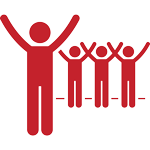
Treat People Like Volunteers

Connect with Purpose
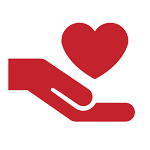
Create a Habit of Caring

Build Radical Transparency
Trust Strategy #1
In most organizations, when there’s a problem, the norm is obfuscation. “We may have this issue, but we can’t tell people about it because we don’t know what the solution is. We’re going to look weak.”
Zak suggests, what if we took a completely different approach and said to our employees:
“Look, we’ve got a major problem. I need your help. I need any good idea. We really need a response to this, and, please, if you can make a case that your approach is going to be useful for the company, I’d love to hear it. That’s a whole different ballgame than, ‘I’m withholding information. When I’ve made a decision, I will tell you what we’re doing.’”
This level of transparency would be terrifying for many leaders who think that their power comes from “being the ones who know,” but if trust is imperative, then it may well be worth the risk to actually communicate honestly.
What if our political, church, and social leaders applied the same principle? It would, indeed, be a radical level of transparency.
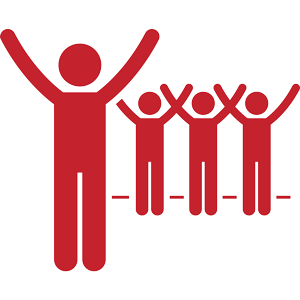
Treat People Like Volunteers
Trust Strategy #2
As a leader of a nonprofit organization, it’s easy for me to see that the people who move our work forward are volunteers. But what if we treated employees the same way? How would that affect people’s willingness to give that discretionary effort?
Zak explains: “You’re choosing to work at this place – to give your energy, your passion, to work with these people and for this organization – and I should treat you like a volunteer. I should treat you with care, with respect, with appreciation, give you a chance to grow, understand that you have emotions and that those emotions that are driven by factors outside of work and inside of work are going to affect your ability to perform.”
In our personal lives, what if we did the same with family and friends and neighbors? Instead of expecting more, what if we were genuinely grateful for the gifts of time and energy from the people around us?
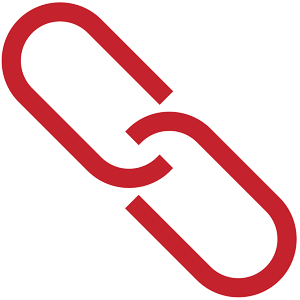
Connect with Transcendent Purpose
Trust Strategy #3
Zak: “We’d like people to put in discretionary effort. How might I get that? Basically, I can either threaten you. I can bribe you. Both of those we acclimate to pretty quickly, so, they’re poor long-term solutions. Instead, I can engage you in the people and the purpose of the organization. This is often a very low cost change, so, the ROI is strongly positive and high.”
When people feel connected to purpose, they are more careful, they bring more energy, and they are more profoundly motivated. As explained in this case study of a large pizza chain, when people feel their work is part of a “bigger mission” worth working towards, they dig deeper.
In the Six Seconds Model of Emotional Intelligence, we talk about Pursuing Noble Goals. A Noble Goal is beyond a mission statement. It’s a way of articulating a transcendent purpose in our lives, and putting it into action. What would happen to trust if we were living more purposefully in our daily lives?
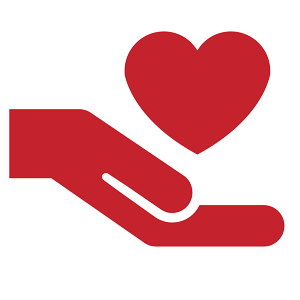
Create a Habit of Caring
Trust Strategy #4
When people feel a sense of connectedness and caring, they trust more — and they are more committed because it’s a mutual relationship. Zak says leaders need to prioritize an organizational climate where it’s normal to be caring. As he explained in this article, the brain circuit is powerful; when people feel good, they are more committed: “HOME (human oxytocin-mediated empathy) is a positive feedback loop. It literally feels good to do good.”
Even more powerful is that caring creates caring. Zak states, “We know from the neuroscience that the brain is so plastic that once you get into a habit of being a caring person, having high EQ, it’s your default behavior.”
The Bottom Line: Compassion
Zak’s final recommendation is to remember that we’re all people trying to get through the day: “To trust is human. If you are going to be your authentic self at work – if you want other people to focus their energy, time, and passion on the organization’s goals, then you’ve got to embrace people and yourself as a flawed, emotional human being.”
Start with the assumption that we’re all trying to do our best. “Sometimes we fail, but if we have compassion and if we build out the tools to connect to each other, then trust comes by naturally and you see this lifting of this the human spirit. Isn’t what we really want, after all, is to be connected in a community of people who we trust and are doing something important for the world?”
For more, listen to Paul Zak’s TED Talk: Trust, morality — and oxytocin? and read Trust Factor: The Science of Creating High-Performance Companies.
What's new in emotional intelligence?
Emotional Intelligence at Work: The Free, Easy Win Most Managers Are Missing
Gallup study compares the biggest gaps in employee vs. manager perceptions. What are managers’ worst blind spots? What are easy wins they could do better to improve team performance?
Emotional Intelligence at Work: Is There Hope for Toxic Workplaces?
The remarkable transformation at Westcomm Pump offers a blueprint for turning around workplaces with depleted morale and trust issues, using the Team Vital Signs assessment.
Gen Z Is Unlike Any Generation Before It. New Research Reveals Why – and How to Work More Effectively with the iGen
Here are 3 key insights from the world’s largest study of emotional intelligence, and what it means for working effectively with Zoomers.
Emotional Intelligence at Work: Stress Is (Still) Rising Globally. Here Are 3 Evidence-Based Solutions
Globally, 44% of employees globally reported feeling stressed A LOT of the day yesterday. Here are 3 solutions to reduce stress.
Emotional Intelligence at Work: 3 Steps to End Meeting Madness and Its Emotional Toll
The modern workplace has a meeting problem, and it takes an emotional and financial toll on people. Here are 3 steps to restore sanity.
Emotional Intelligence at Work: 7 Principles to Rewrite the Unwritten Rules of Expressing Emotions
An organization’s emotional culture influences employee satisfaction, burnout and the bottom line. Is it time to rethink your rules?
- Coaching Through the Emotional Recession: Three Practical Tips for Trauma-Informed Coaching - May 1, 2024
- Knowing Isn’t Coaching: Three Emotional Intelligence Tools for Professional Coaches - April 3, 2024
- Coaching Down the Escalator: 3 Emotional Intelligence Tips forCoaches to Reduce Volatility & De-escalate Conflict in a Polarized World - March 6, 2024

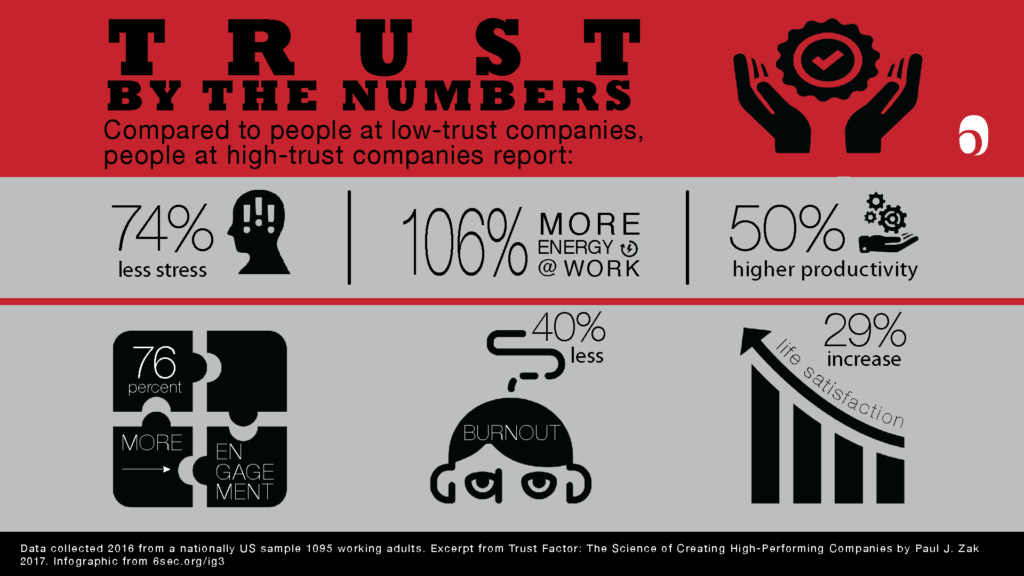







We learned main many things but no or one can have benefit in like life timetable time passes on.
What a beautiful elucidation of trust.
Thank you